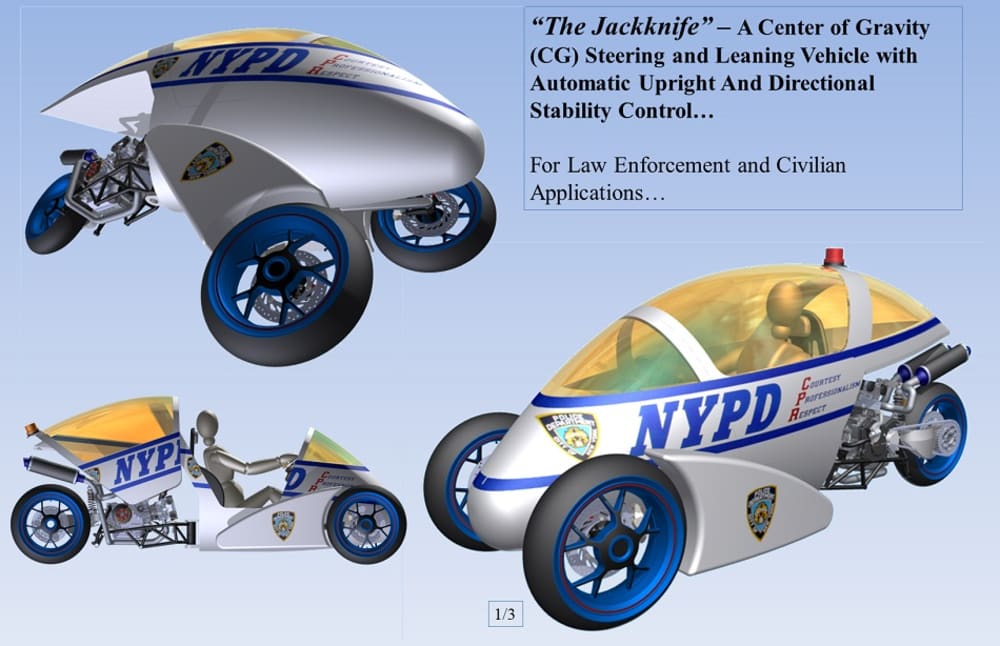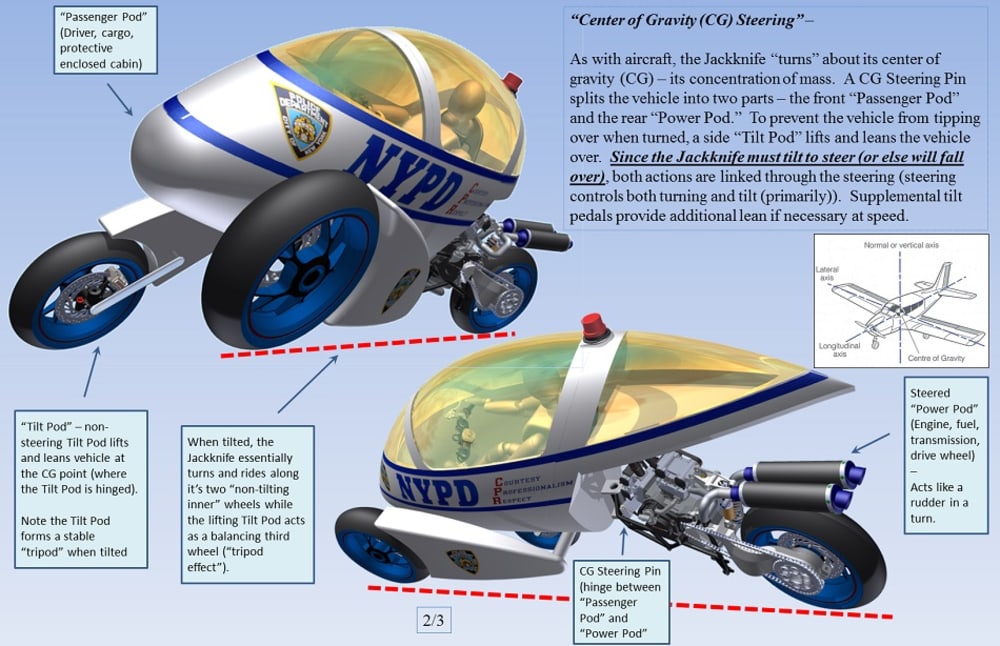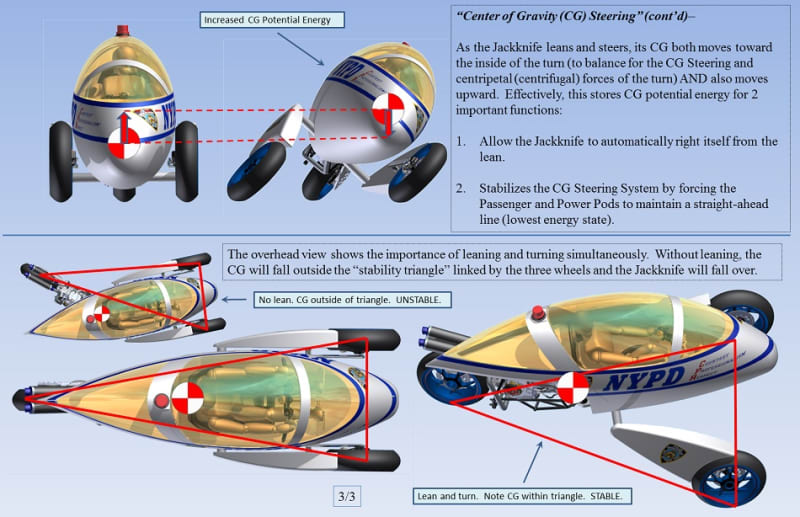For decades, budget conscious police departments have depended on the police motorcycle as effective motorized transport at low cost. However, while more economical, the police motorcycle is exposed to the weather, offers no crash protection and with only 2-wheels - is inherently unstable.
Simply enclosing a motorcycle would seem to be the obvious solutions. However, so far for technical and cost reasons, a police “cabin” (enclosed motorcycle) has defied a practical solution. The proposed “Jackknife” vehicle with the novel “Center of Gravity” Steering System (CGSS) seeks to be that practical solution.
At first sight, the Jackknife is a typical “tadpole” style 3-wheel vehicle with 2 wheels forward and a drive wheel at the rear in an enclosed protective body. However, looking closely, the Jackknife has the following novel features:
1. The Jackknife is divided into two sections. The forward “Passenger Pod” consists of the protective (weather and crash) body, driver, cargo and controls. The rear “Power Pod” houses the engine, transmission, and fuel. Both sections are hinged by the CGSS hinge.
2. Note the front wheels do not have traditional steering functions. The wheels are located on long “Tilt Pod” arms – hinged at or near the Jackknife’s CG point - that tilt it. Having no traditional steering functions here greatly simplifies the tilting mechanism. Note the Tilt Pod only hinges downward 1-direction from its resting locked position.
3. The key to the Jackknife is the CGSS system that steers it at or near its center of gravity (CG). Therefore, it steers (turns) more like an airplane than a typical motorcycle (or car). Furthermore, like an airplane, the entire body (here the Passenger Pod) is steered into the direction the driver wants to go. As a result, the Power Pod acts like an airplane rudder turning the Jackknife.
4. Once turned in a “jackknifed” position, the Jackknife is unstable – due to a shifting CG. To prevent it from falling over, the steering system is also linked (mechanically, etc.) to the tilting/leaning system. Therefore, when the Jackknife steers, one Tilt Pod also jacks up one side so its CG moves sideways to compensate (and remain upright). Note by rolling over on its resting front and rear wheels, this leaning also raise the CG.
5. With the Tilt Pod hinged at the CG, the Tilt Pod forms the third leg of a stable “tripod.” Essentially, the Jackknife – in a turn – is riding on its “inner” front and rear wheels with the extended Tilt Pod wheel providing good stability.
6. Raising the CG stores potential energy. This energy will allow:
a. The Jackknife to return to an upright position unassisted.
b. Aid directional stability by holding the CGSS in a straight-line position. Since the straight ahead position is the CG’s lowest energy state, any directional deviation will raise the CG’s height – and potential energy. Thus the linked steer-tilt CGSS will always have a natural tendency to return to the Jackknife’s lowest energy state – the straight-line position.
Like this entry?
-
About the Entrant
- Name:James Lin
- Type of entry:individual
- Patent status:pending








